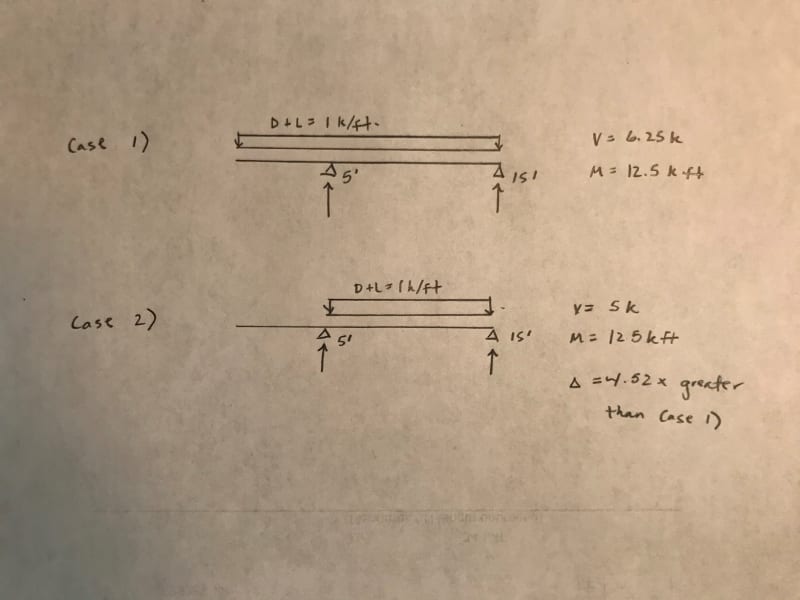skimboard20
Structural
- Mar 10, 2021
- 21
I have recently been designing some cantilever beams, and have been thinking more and more about a conservatively enveloped design for cantilevers. My question in short is, to what extent is it standard practice to pattern loads on a given beam in order to achieve the worst case shear/moment demand or deflection?
I have attached a simple example with two load cases: 1) dead and live load across the full length of the beam, 2) dead and live only on the back span on the beam. Case 2) yields the worst case for deflection (as with any cantilever beam, the load on the cantilever counteracts the deflection of the back span.
Obviously this only gets more complicated as you introduce more loads, overstrength factors, varying cantilever lengths, etc. I am trying to keep this post as general as possible, and maybe I'm just looking for some other engineer's opinions on how they approach an envelope design for a cantilevered beam.
I appreciate anyone's insight on their approach.
Thanks!

I have attached a simple example with two load cases: 1) dead and live load across the full length of the beam, 2) dead and live only on the back span on the beam. Case 2) yields the worst case for deflection (as with any cantilever beam, the load on the cantilever counteracts the deflection of the back span.
Obviously this only gets more complicated as you introduce more loads, overstrength factors, varying cantilever lengths, etc. I am trying to keep this post as general as possible, and maybe I'm just looking for some other engineer's opinions on how they approach an envelope design for a cantilevered beam.
To what extent should loads be patterned?
Should you pattern loads within a load combination?
For example, cantilevered beam carries D, L , S. One case: D+L+S along full beam. Another case: D+L+S along only back span. Another case: D+L along full beam, S only at cantilever ... and so on until every single combination/pattern is exhausted.
I appreciate anyone's insight on their approach.
Thanks!

